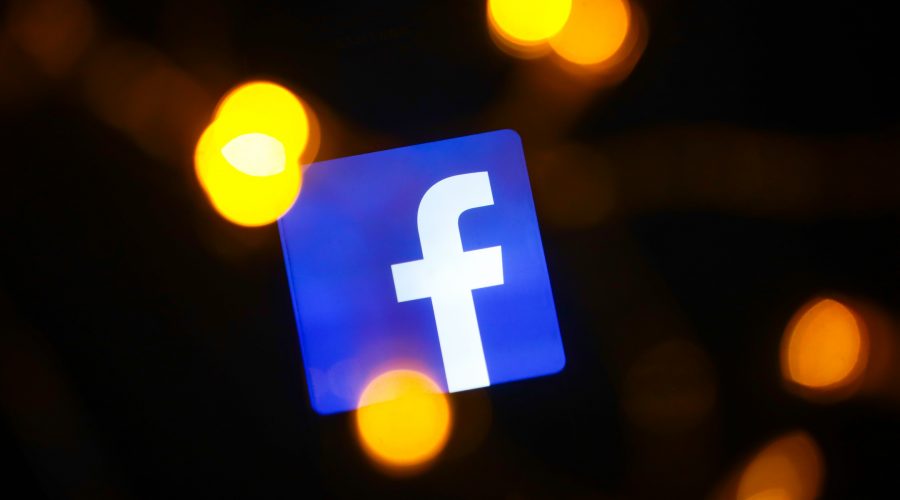Facebook has a new prayer feature. But is it made for Jews?
Published August 25, 2021
After her daughter was killed in a drive-by shooting earlier this year and her son began using drugs to cope with the pain, one mother was overwhelmed. Unsure what to do or how to help, she posted about it on Wednesday in “PRAYER WARRIORS,” a Christian Facebook group with over 827 thousand members, requesting prayers for her son to get sober.
Within an hour, there were over 100 comments beneath her post, most reading simply “prayers” or “praying,” as the group rallied around her — as they do each day for dozens of members requesting prayers for illness, help through hardship, or even good luck for taking a test.
PRAYER WARRIORS is far from the only one of these groups, but the comments are similar in every iteration: “Praying for you.” “Sending prayers.” “Prayed.”
ADVERTISEMENT
Now, praying in these groups will be even easier with a new prayer feature the social media giant just rolled out, allowing users in Facebook groups to create special posts for requesting prayers that include a special “I prayed” button. “Once a prayer request has been posted, group members can choose to indicate they’ve prayed, react, leave a comment, or send a private message,” a Facebook spokesperson explained; the company said the tool was inspired by increased use of the platform for religious purposes during the pandemic.
Most prayer groups on the site are Christian; even searches for groups using terms such as “Jewish prayer,” “davening” or “tefillah,” which means prayer in Hebrew, tended to turn up Christian or Messianic Jewish groups, though a few small Jewish groups appeared. So, it’s likely that the tool was largely inspired by Christian prayer, though Facebook did not respond to questions about the tool’s development, and whether any religious professionals and clergy were consulted in the process.
The prayer tool seems to be built for a specific type of prayer, known as petitionary or intercessory prayer, in which someone prays on behalf of another person for them to receive a specific boon, whether that be good health or good grades.
ADVERTISEMENT
That might not be the first thing you think of when you think of Jewish prayer, which often is about praising God’s greatness in a synagogue setting. But Rav Amalia Mark, Director of Programs and Partnerships at Mayyim Hayyim in Newton, MA, pointed out that Judaism has a wealth of specific petitionary prayers, whether praying to only have good dreams or guests to enjoy a meal, as well as the tradition of saying the mi shebeirach prayer or tehillim for the ill.
Still, there’s an idea of what is appropriate to pray for. “When I think of petitionary prayer, I’m thinking much broader than pray for me, it’s my driver’s ed test, I want to get my license,” Mark said of the prayer tool.
Even though Jews may be able to make use of the new prayer function in theory, it seems that these kinds of prayer requests are less common in practice, given the dearth of Jewish prayer request groups on Facebook.
Rabbi Sandra Lawson — also known as “the Snapchat rabbi” — turned the feature on in some of the Jewish Facebook groups she runs, but she said no one has used it yet. While she sees some potential for its use in Jewish circles, she said she didn’t see herself using it and would not have heard about it if I had not reached out to her for this piece.
Several people I spoke to had worries about the tool sapping meaning from religious practice by making it a rote, mindless action.
“It’s so 21st century American, this inability to put work into anything. I sound like I’m 100 years old, but it’s that I can just click a button as opposed to the fact that prayer is really hard — putting in kavanah and intention takes work,” Mark said, explaining that petitionary prayer is usually part of a wider tradition of daily prayer that works to deepen one’s relationship with God. “It’s a practice — it’s active, it’s ongoing. Clicking a button is not.”
This worry is not limited to Judaism, despite the popularity of prayer requests in Christian Facebook groups.
“There is, in Christianity sometimes, this tendency to think of God as this cosmic vending machine, that if you put in the right kind of petition, that you get out what you ask for,” said Matthew Ichihashi Potts, a professor of Christianity at Harvard Divinity School. (Potts is a former professor of mine.)
Potts emphasized that he doesn’t want to denigrate the practice, and admitted he might be too much of a Luddite to fully appreciate the depth of experience that praying on social media might achieve. But he worried that the tool boils prayer down to its basest form, and removes it from its communal context and from a wider tradition of prayer that also praises God and offers service.
“This is abstracting the relationships that are built through prayer,” he said. “It’s abstracting just the petitionary from all these other kinds of Christian prayers, which just makes it a less rich experience as part of a community and a less rich prayer life.”
Some Facebook prayer groups already have hundreds of thousands of members, however, and clicking an “I prayed” button is not very different from typing the same phrase in a comment; the new tool simply makes it easier to count the prayers you’ve received. If anything, the new button will make it even easier and more rote to pray on Facebook — just like we mindlessly click the “like” button and later assess the success of a post by the resulting statistics of likes and comments.
Maybe God, too, will soon be ranking prayers via how many likes they got on Facebook.


















